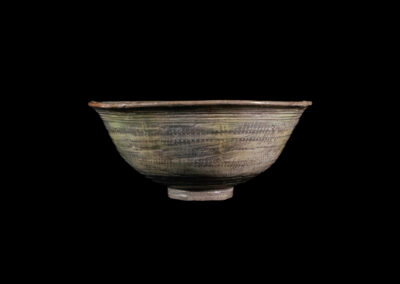EXPLORE & DISCOVER
Korea Collection
Korean Craftmanship
The earliest earthenware discovered in Korea originated from 5000 years BC. About 1000 BC immigrants to Korea particularly from Manchuria and Mongolia started to create vessels from bronze and stoneware. At that time pottery wheels have not yet been used. New technologies of pottery art developed afterwards the millennium and especially during the Silla Period (668 – 935 AD). During this epoch in the capital of Kyōngju arose a new aristocracy that was of important influence on associating pottery with the social status. [1]
From 10th to 14th centuries AD the famous Koryō-Celadon represented the highlight in the history of Korean pottery. Celadon-glaze on specific nuances of turquoise colors became together with new techniques like sanggam to an epitome in the art of pottery. Sanggam means engraving patterns and fill it with slip. During the Joseon Dynasty (1392 – 1910 AD) white ware became favoured. From the 15th to 16th centuries on the products of potteries – dishes, bottles, jars – were used for private purposes but sometimes for ceremonies, too. A typical vessel of the 18th century is the „moon jar“. This is alongside valuable pieces from the Koryō and Joseon Dynasties also enclosed in the M07 Art Collections. (HV)
________________________
[1] Lee, Jong-min (2000): Steinzeug: Symbol kultureller Entwicklungen. /Choi, Kun (2000): Das Geheimnis des Koryō-Seladons (10.-14.Jh.). In: Handbuch der koreanischen Kunst. Steinzeug und Seladon. Ernst Wasmuth Verlag. Tübingen. 8-15 und 57-61








































